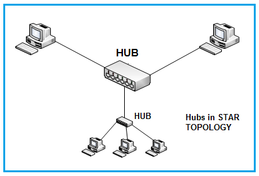10 Ethernet Interview Questions and Answers
Prepare for your engineering interview with these frequently asked 10 questions and answers about Ethernet technology.
Showing 25 posts (Page 1 of 2)
Advertisement
Prepare for your engineering interview with these frequently asked 10 questions and answers about Ethernet technology.
Explore the key differences between 10GbE, 40GbE, and 100GbE physical layers, including data rates, encoding methods, and typical applications in modern networks.

Explore the 10 Gigabit Ethernet (10GbE) physical layer, its subgroups (10GBASE-R, X, T, W), and sublayers like XGMII, PCS, PMA, PMD, and MDI. Learn their functions and specifications.

Explores the architecture and features of the 100 Gigabit Ethernet Physical Layer (PHY), including PCS sublayer, multilane transmitter and receiver concepts.
Explore the distinctions between 10GBASE-T, 10GBASE-R, 10GBASE-X, and 10GBASE-W, covering their media, encoding, and application differences in 10 Gigabit Ethernet.

Explore the architecture and sublayers of the 40 Gigabit Ethernet physical layer, including RS, XLGMII, PCS, FEC, PMA, PMD, and AN.

Explore the differences between 64B/66B and 8B/10B signal encoding techniques used in Ethernet systems, including their application in 10GBASE-R and 10GBASE-X.
Explore 800GE routing: its key features, technological advancements, and advantages over previous generations for improved network capacity and efficiency.
Explore the key differences between BroadR-Reach, 100Base-Tx, and 1000Base-T Ethernet technologies, focusing on their signaling, duplex, cabling, and features.

Explore the distinctions between CAN and Ethernet, two prominent communication protocols in automotive and industrial fields. Compare data rates, topology, and applications.

Compare 802.3af vs 802.3at vs 802.3bt and explore difference between these Power over Ethernet (PoE) standards including their features, applications and benefits.
Learn about DoIP (Diagnostic Communication over Internet Protocol), its benefits, and how it surpasses older diagnostic protocols like CAN and K-line in automotive diagnostics.
The E-carrier system is a non-synchronous PDH, comprising E0, E1, E2, E3, and E4, each offering different digital bit rates and channel capacities. Learn the essentials.
Explore key networking terms including OSI, TCP/IP, ARP, routers, switches, and protocols essential for understanding network infrastructure.

Explore the pros and cons of Ethernet technology, covering reliability, speed, security, mobility, and cost-effectiveness for network solutions.

Explore ethernet hub basics, including passive, active, and intelligent hub types. Understand how hubs function as multiport repeaters in ethernet networks.

Explore the fundamentals of Ethernet networks, including types, speeds, components, and service providers. Understand the evolution and application of Ethernet in modern LAN environments.

Explore Ethernet over Coax (EoC) technology: how it works, its advantages and disadvantages, and key differences compared to traditional Ethernet. Learn if EoC is right for your networking needs.

Learn about Ethernet over Copper (EoC), its standards, merits, and demerits. Understand how it utilizes existing copper telephone lines for data communication.

Explore the benefits and drawbacks of Ethernet over Fiber Optics, including speed, distance, security, and cost considerations for high-performance networks.

Explore the benefits and drawbacks of Ethernet over fiber optic Ethernet, comparing it to traditional copper Ethernet implementations for network communication.
Explore Ethernet over InfiniBand (EoIB), its benefits like high speed and low latency, drawbacks like specialized hardware, and key differences from standard Ethernet.

Explore the pros and cons of Ethernet over twisted pair for networking. Learn about cost, installation, distance limitations, and interference susceptibility.

Ethernet over WiFi uses wireless networking for data transmission, providing mobility but with trade-offs in speed, reliability, and security compared to wired Ethernet.
Explore the distinctions between Ethernet, Fast Ethernet, and Gigabit Ethernet, covering speeds, standards, and physical layers. Understand the evolution of Ethernet technology.
Advertisement